Informational
How to #EnrollAtVSU?
Starting last academic year, Visayas State University (VSU) introduced a one-stop shop enrollment system to make admission and enrollment more efficient and convenient for incoming Viscans. This setup was designed to reduce long queues, minimize confusion, and allow students to complete all necessary steps in one place.
This process brings together various enrollment services into a single venue. By doing so, VSU makes it easier for new students to settle everything without having to move from office to office.
For the incoming #ProudViscans of the Main Campus, enrollment will be held from June 23 to July 4, 2025 at the Center for Continuing Education (CCE) Building in the VSU Lower Campus.
To help you prepare, here is a step-by-step guide:
Step 1: Set an Online Appointment.
Before going to the enrollment site, students need to book an online appointment. This helps manage the number of students per day and keeps the process more organized. Only 250 slots are available per day. The appointment portal will open on June 16, 2025 (Monday) at 8:00 AM.
You can book your appointment here: https://cat2025.vsu.edu.ph/appointment. Below is your guide to set an appointment:
Step 2: Intake Session with a Guidance Counselor
Once on-site, students will attend a brief intake session (around 5–7 minutes) with a Guidance Counselor. This is a short orientation to introduce you to the services available for student support.
Additionally, students are required to bring one long white folder during your session.
Step 3: Submit Admission Requirements
Submit all original documents to the Admissions Office. Incomplete submissions will not be accepted. However, if the original PSA/NSO Birth Certificate is not yet available, it may be conditionally accepted if accompanied by a duly signed promissory note. You may check the list of required documents here: https://www.vsu.edu.ph/admission/college/enrollment-process
Applying for Dormitory Accommodation? If yes, you must pay 50% of the total dormitory fee for five months, depending on the rate of your selected dormitory or cottage.
Step 4: Pay Fees at the Cashier
Settle the following payments at the cashier:
Dormitory Application Fee (for dorm applicants)
ID Lanyard: Php 55.00
Step 5: Proceed to the Registrar’s Office
In this step, students will need to:
- Confirm the accuracy of personal profile and information.
- Have subjects encoded by the Registrar's staff.
- Receive an electronic copy of the Certificate of Registration (COR).
- Proceed to ID printing after the COR is issued.
Step 6: Photo ID
After receiving your COR, head to the ID station for photo capturing and printing. Ensure that you are in proper attire and presentable, as this ID will serve as your official student identification throughout your stay at the university.
Alternatively, you may prepare an e-copy of your ID photo with a white background, preferably in formal attire, to facilitate faster processing of their ID card.
Step 7: USSC Membership
All officially enrolled students are required to register for the University Supreme Student Council (USSC) – Baybay. As mandated by Article 5, Section 4 of the USSC Constitution and By-Laws, all officially enrolled students are required to become members of the University Supreme Student Council (USSC) - Baybay and pay Php 50.00 per semester, totaling Php 100.00 per academic year.
Students are also advised to bring your mobile phones to facilitate the online registration process for USSC membership.
Step 8: Submit Customer Feedback
After completing the enrollment process, students are encouraged to provide feedback on their experience. This helps improve the quality of services offered.
We’re looking forward to welcoming you to the very scenic university! Please come prepared, follow the instructions carefully, and do not forget to check the official VSU Facebook page and website for any updates or announcements.
We hope your enrollment goes smoothly and see you soon, future #ProudViscans!
Distribution of Queen Pineapple in Region V & VIII, Philippines
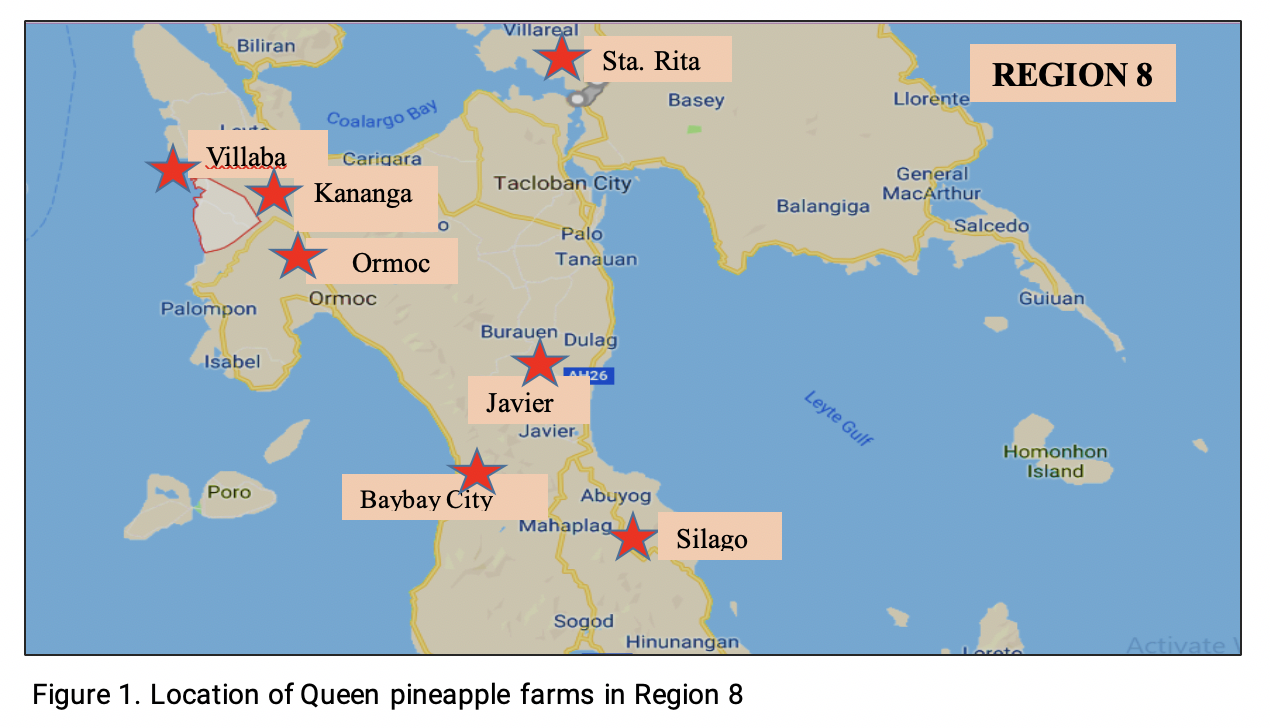 In Region VIII, Queen Pineapple populations including the newly established ones were documented as to size and location. As surveyed, Queen pineapples are grown in Baybay City, Javier, Kananga, Ormoc City and Villaba in Leyte, Sta. Rita in Samar and Silago in Southern Leyte, with a total area of 229.78 hectares.
In Region VIII, Queen Pineapple populations including the newly established ones were documented as to size and location. As surveyed, Queen pineapples are grown in Baybay City, Javier, Kananga, Ormoc City and Villaba in Leyte, Sta. Rita in Samar and Silago in Southern Leyte, with a total area of 229.78 hectares.
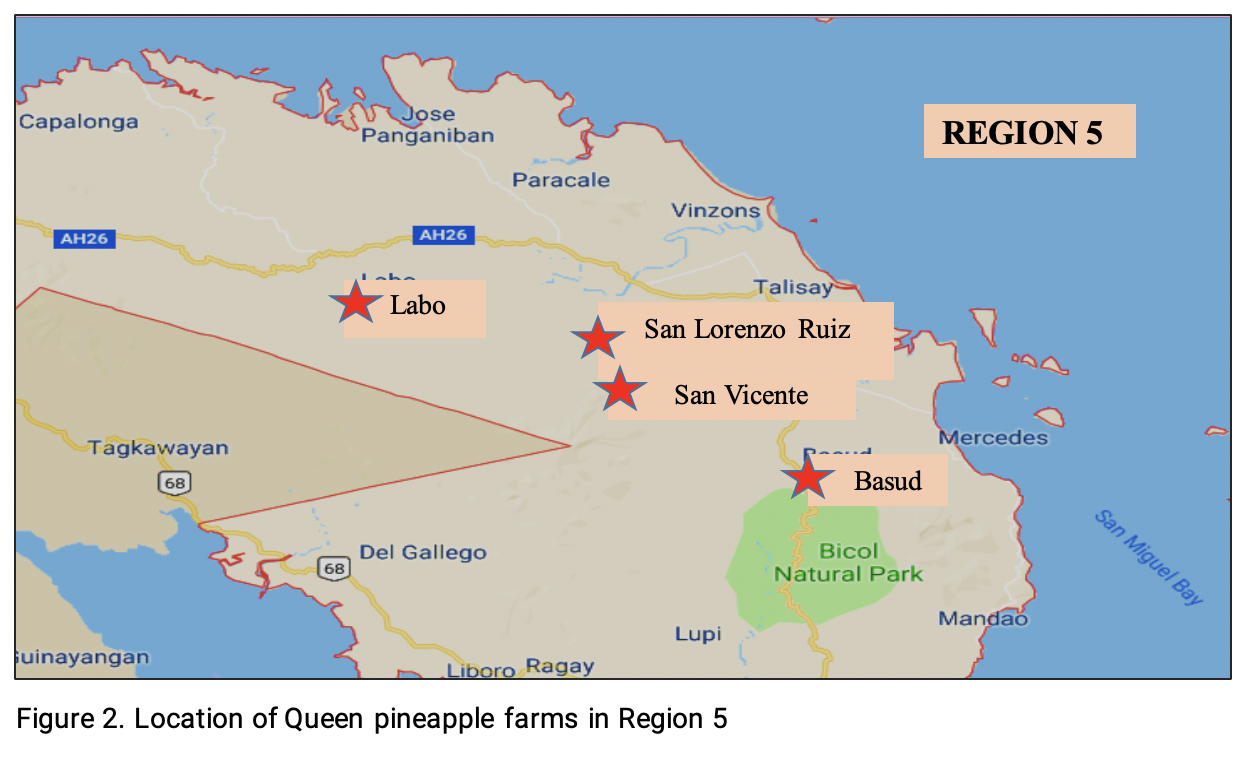
In Luzon, Queen Pineapple is mainly grown in the Provinces of Camarines Norte. A total of 2,525 hectares of the province is planted to pineapple translated to 82% of total pineapple area in Municipality of Basud, Labo, San Lorenzo Ruiz and San Vicente, Camarines Norte.
Management Options for Major Insect Pest associated with Queen Pineapple
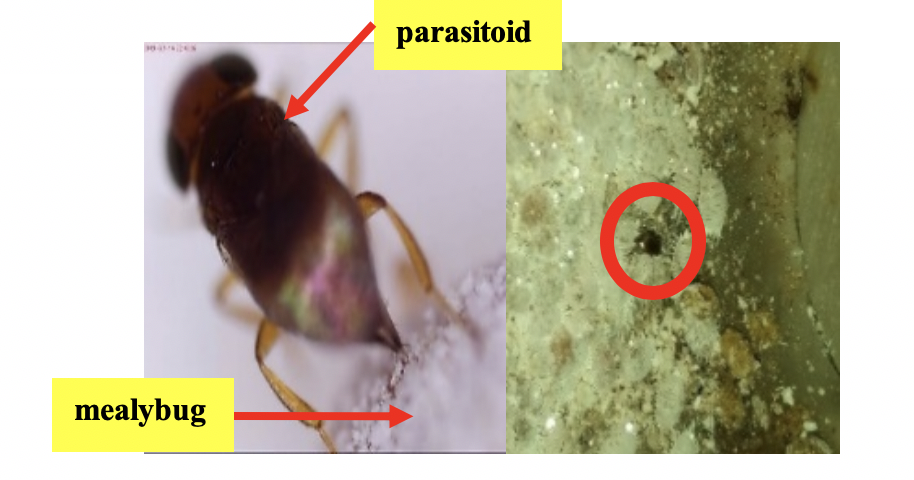
Figure 1. H. pseudococcina parasitizing on adult PPMB
1. Parasitoids
Encyrtid Parasitoid, Hambletonia pseudococcina (Compere)
Order: Hymenoptera
Family: Encyrtidae
Description: A very small parasitoid with clubbed-like antennae that can be parasitized up to 8 adult PPMBs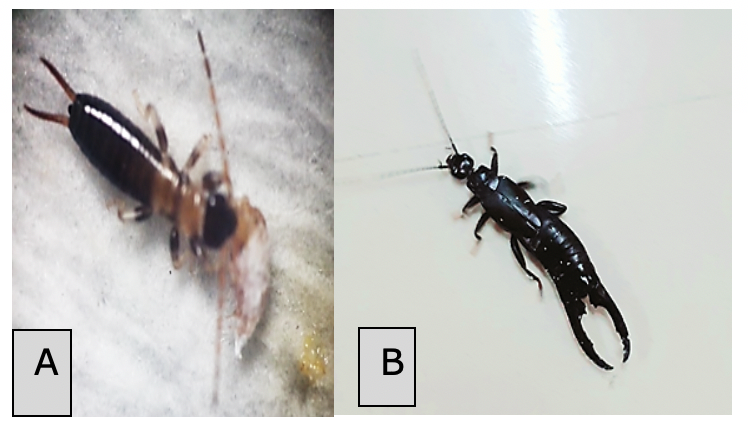
Figure 2. A) Nymphal and (B) adult stages of predatory earwig
2. Predators
- Predatory black earwig, Chelisoches morio
Order: Dermaptera
Family: Chelisochidae
Description: Has four nymphal instars that can reach up to 120 days prior from hatching to mortality and can consume 1-2 adult PPMB and up to 100 individuals of PPMB crawlers per day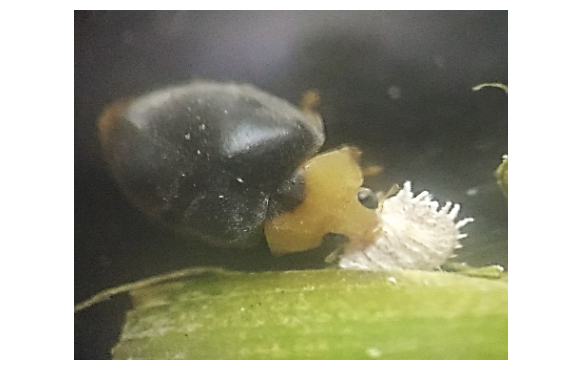
Figure 3. Cryptolaemus montrouzieri feeding on adult PPMB
- Predatory coccinellid beetle, Cryptolaemus montrouzieri
Order: Coleoptera
Family: Coccinellidae
Description: A voracious predator with a long history in biological control against mealybugs that could potentially consume up to 20 individuals of PPMB crawlers and 1 PPMB adult per day.
3. Entomopathogenic Fungi (EPF)
EPFs are microorganisms that specifically infect and often kills insects and other arthropods. EPFs are eco-friendly and good substitute for chemicals
Three (3) isolates of EPFs against PPMB:
• Metarrhizium anisopliae (fig.4)
• Lecanicillum lecanii (fig.5)
• Beauveria bassiana (fig.6)
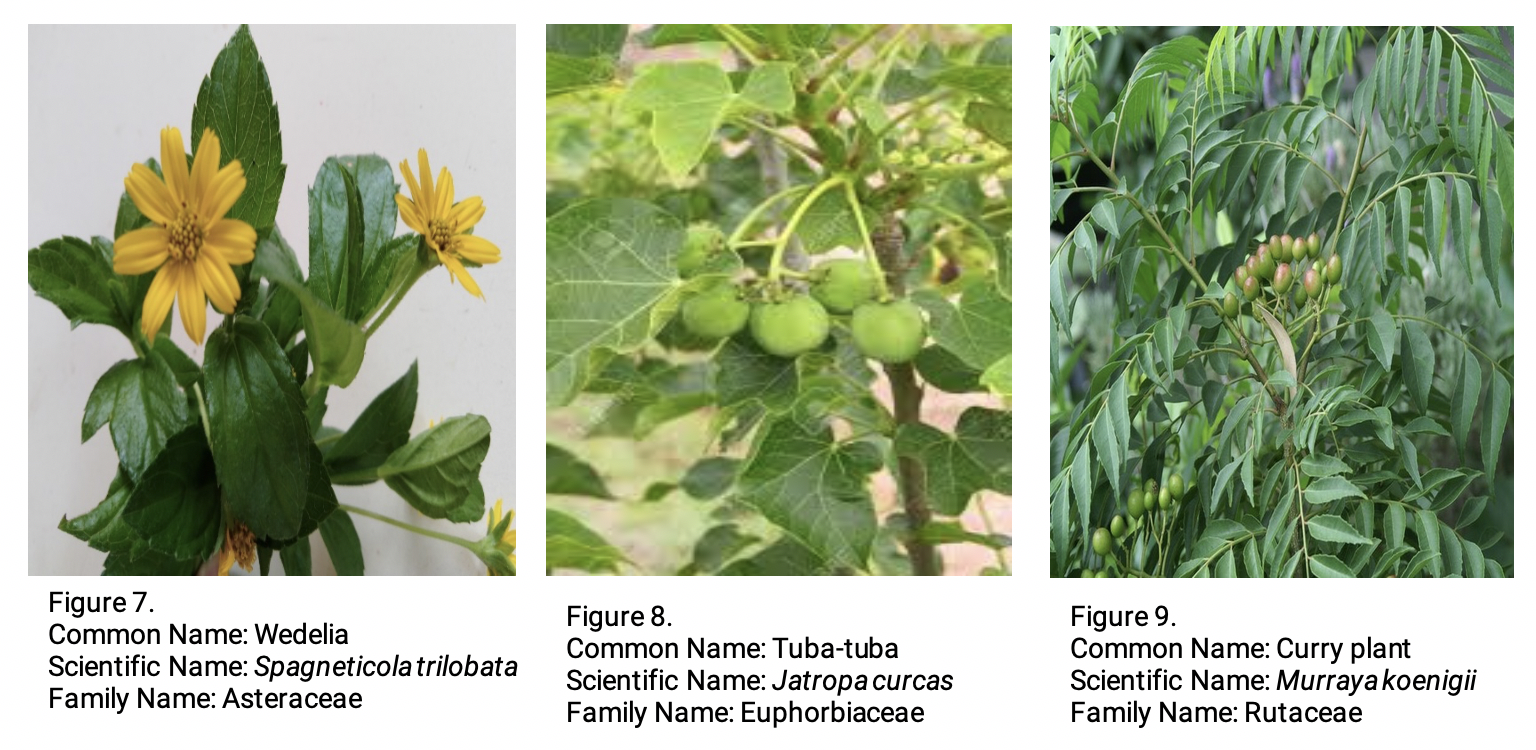
4. Botanical Insecticides
Botanical insecticides are naturally occurring chemicals extracted from plants or minerals to control or minimize insect pest population.
Botanical insecticides against PPMB includes:
• Jatropa curcas (fig.13)
• Murraya koenigii (fig.14)
• Spagneticola trilobata (fig.15)
Management Options for Major Diseases associated with Queen Pineapple
1. Use of Potential Antagonists
• Trichoderma sp. (fig.1)
• Penicillum sp. (Isolate1) (fig.2)
• Penicillum sp. (Isolate2) (fig.3)
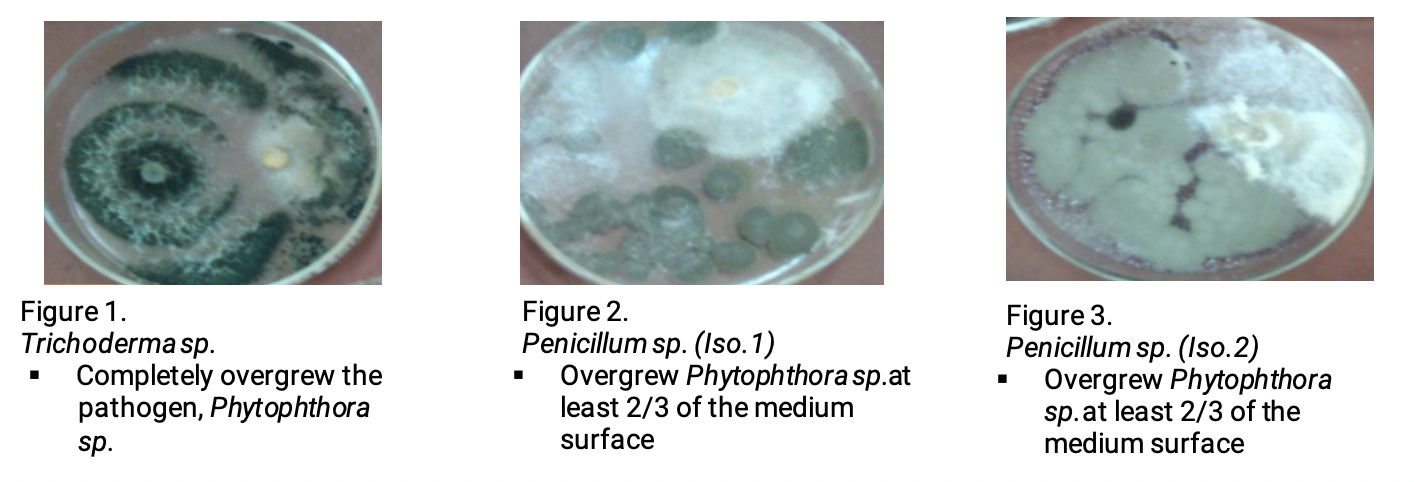
2. Use of Plant Extracts/Plant-Based Solution
Plant extracts that inhibits the germination of spores of Colletotrichum sp. were:
• Mayana, Coleus scutellarioides (fig.4)
• Panyawan, Tinospora rumphii (fig.5)
• Tigbaw, Callicarpa cana (fig.6)
• Asyang, Mikania cordata (fig.7)
• Ginger, Zingiber officinale (fig.8)
• Bio-Path (fig.9)
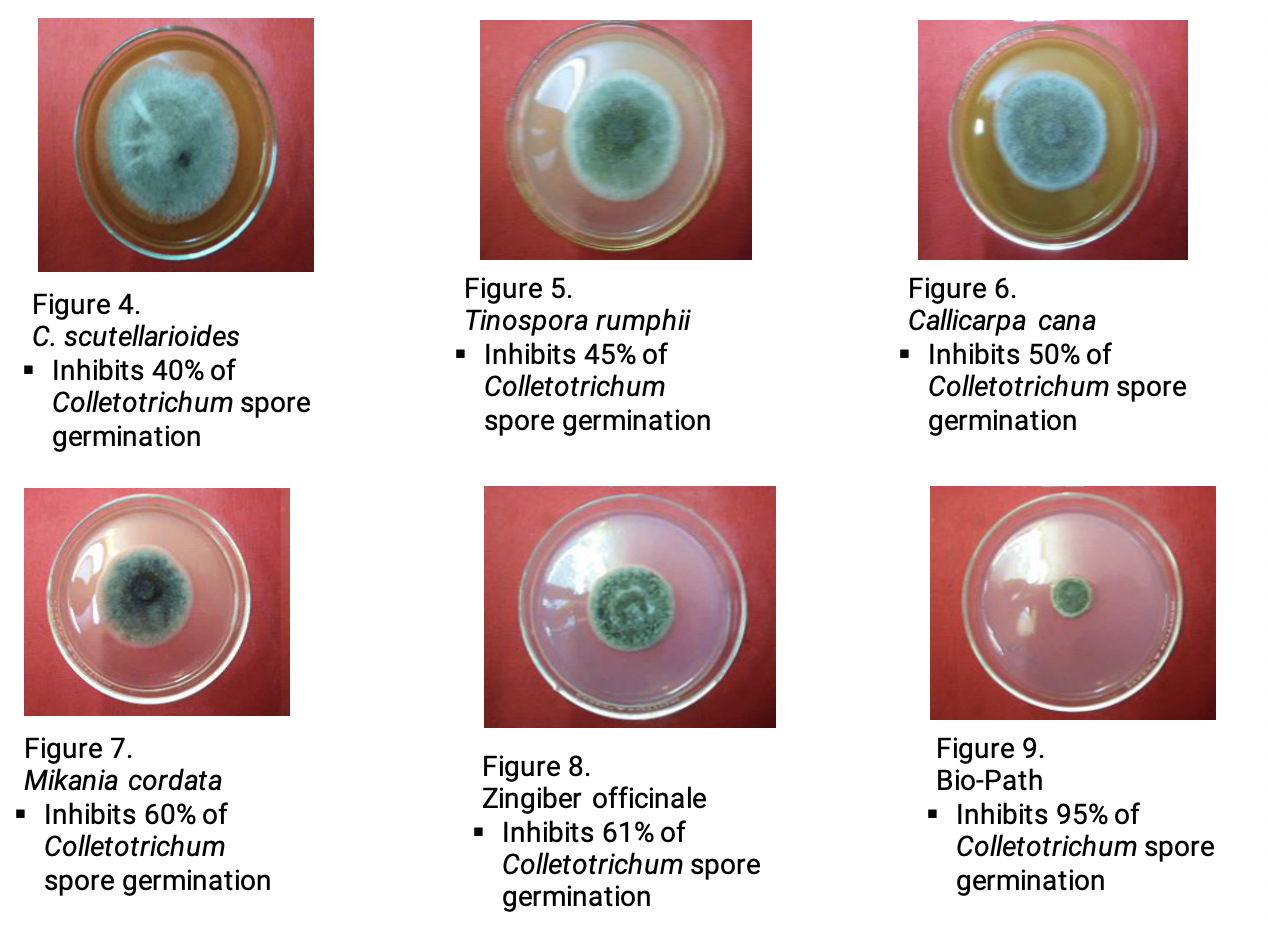
3. Use of Wood Vinegar
Wood vinegar is a liquid generated from the gas and combustion of fresh wood burning in airless conditions.
Effective wood vinegar plant sources found to affect the development of Colletotrichum sp at 7% (fig.10) and 10%(fig.11) concentration were:
• Tigbaw, Callicarpa cana
• Bamboo, Bambusa vulgaris

Plant Parasitic Nematodes Associated with Queen Pineapple
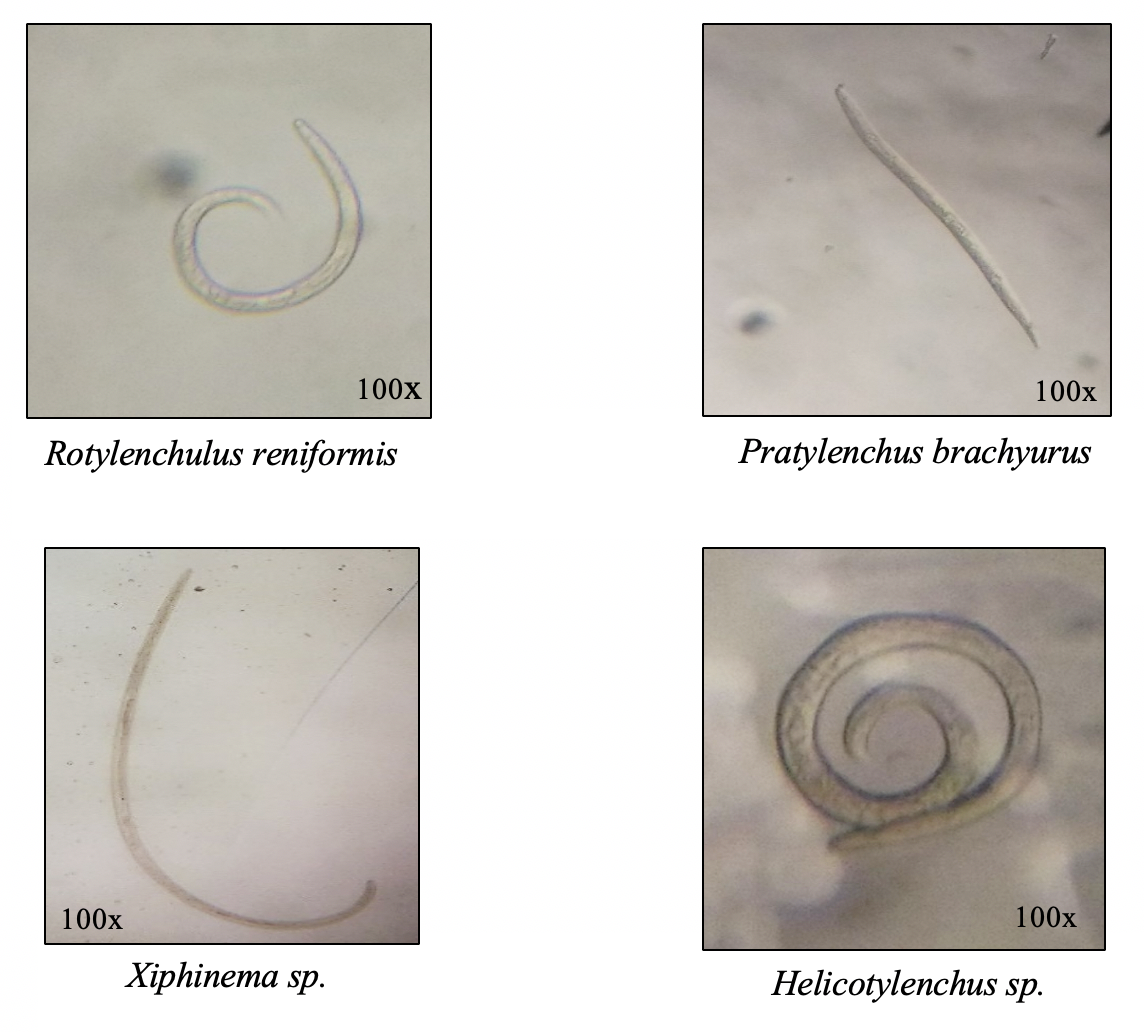 Plant-parasitic nematodes are pests of agricultural crops and cause crop yield reduce when the roots are damaged. Pineapple is extremely sensitive to root feeding nematodes. Four genera of plant parasitic nematodes were found to be associated with Queen pineapple such as Rotylenchulus reniformis, Pratylenchus brachyurus, Xiphinema sp. and Helicotylenchus sp. as soil samples were collected and isolated.
Plant-parasitic nematodes are pests of agricultural crops and cause crop yield reduce when the roots are damaged. Pineapple is extremely sensitive to root feeding nematodes. Four genera of plant parasitic nematodes were found to be associated with Queen pineapple such as Rotylenchulus reniformis, Pratylenchus brachyurus, Xiphinema sp. and Helicotylenchus sp. as soil samples were collected and isolated.

